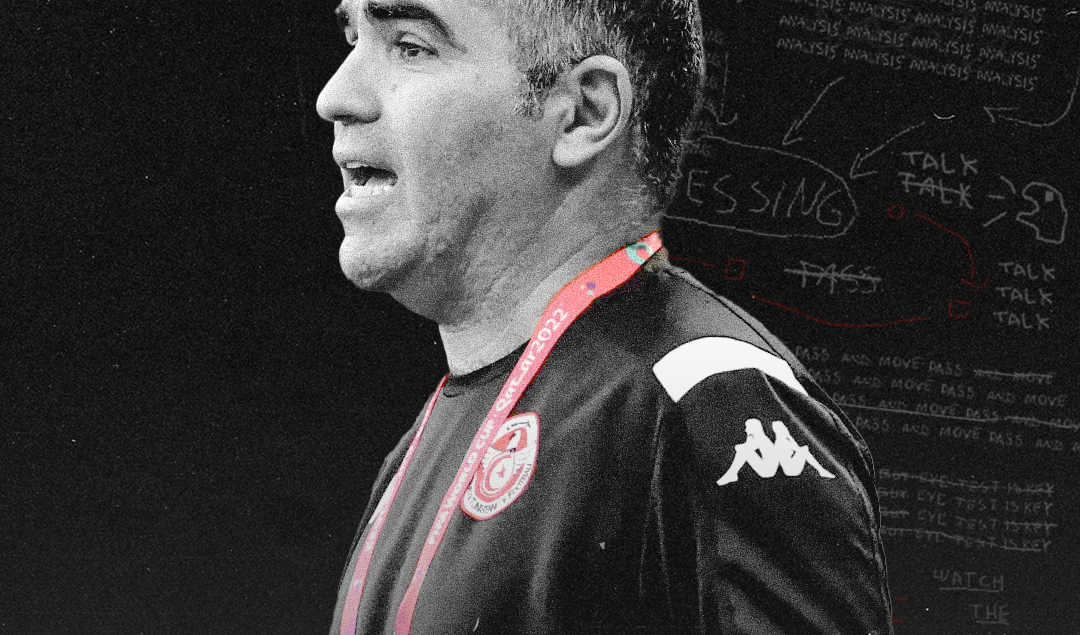Tactical Analysis: Tunisia 1-0 France
Tunisia entered the 2022 FIFA World Cup with five previous appearances in the competition, all of them ending in a group stage elimination, and just two victories — a 3-1 win vs. Mexico in 1978 and a 2-1 win vs. Panama in 2018. After drawing 0-0 to Denmark and losing 1-0 to Australia, Tunisia found themselves within inches of reaching the knockout round for the first time, with Wahbi Khazri opening the scoring within 58 minutes and securing a 1-0 win against France.
It would have been enough for a Round of 16 presence, but minutes later, Matthew Leckie opened the scoring for Australia who would go on to defeat Denmark 1-0 to return to the knockout round after 16 years. Tunisia would go with the same 3-4-3 shape with various substitutions like Ali Maâloul and Wajdi Kechrida at the full back positions as well as Mohamed Ali Ben Romdhane, Anis Ben Slimane and Khazri in attack.
France were one of three teams to secure a knockout round presence after two matches alongside Brazil and Portugal, and Didier Deschamps used this opportunity to give a rare starting opportunity to various squad players such as Randal Kolo Muani, Axel Disasi and Youssouf Fofana, with the reigning champions setting up in a 4-3-3 formation.
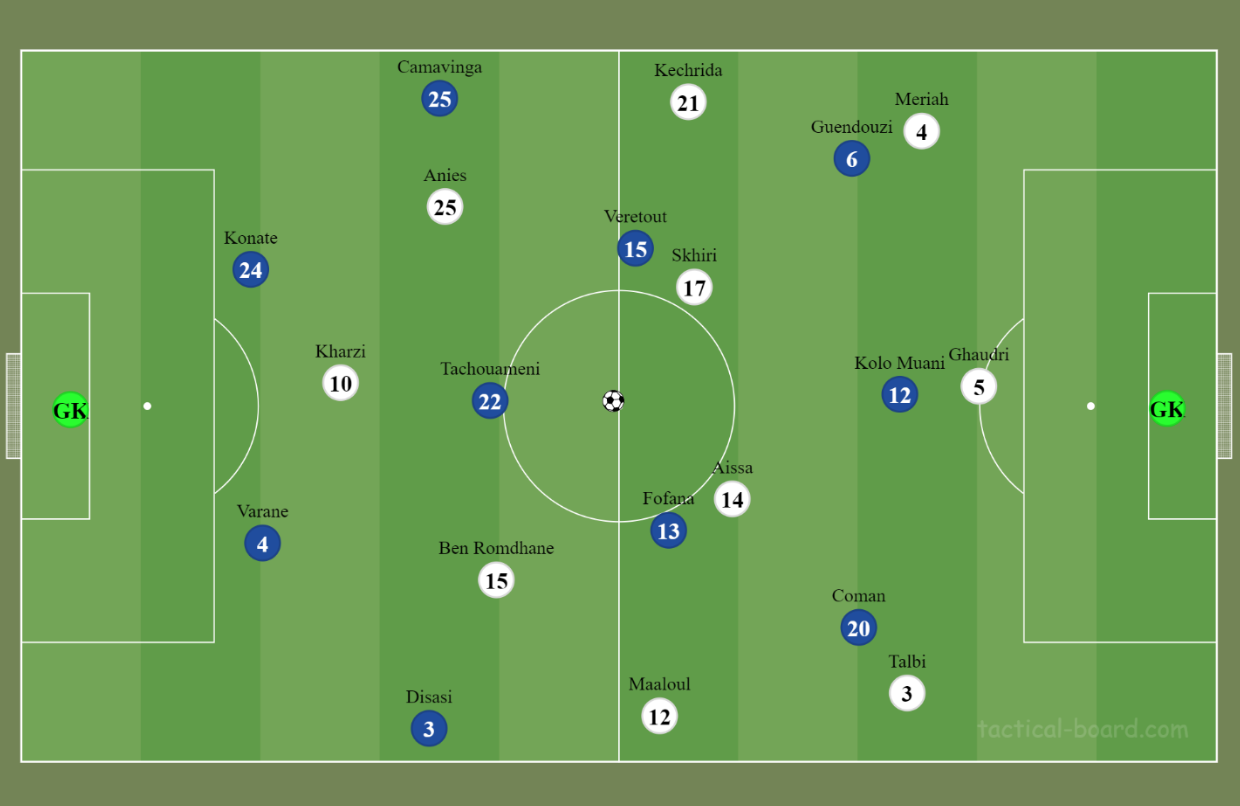
Tunisia’s High Press
France built from the back with a 4-3-3 shape where the full-back would stay close to the CBs and CM Jordan Veretout remained close to Aurelien Tchouameni as a double pivot, Youssouf Fofana moving forward between the lines, and Kingsley Coman and Matteo Guedouzi staying high in front.
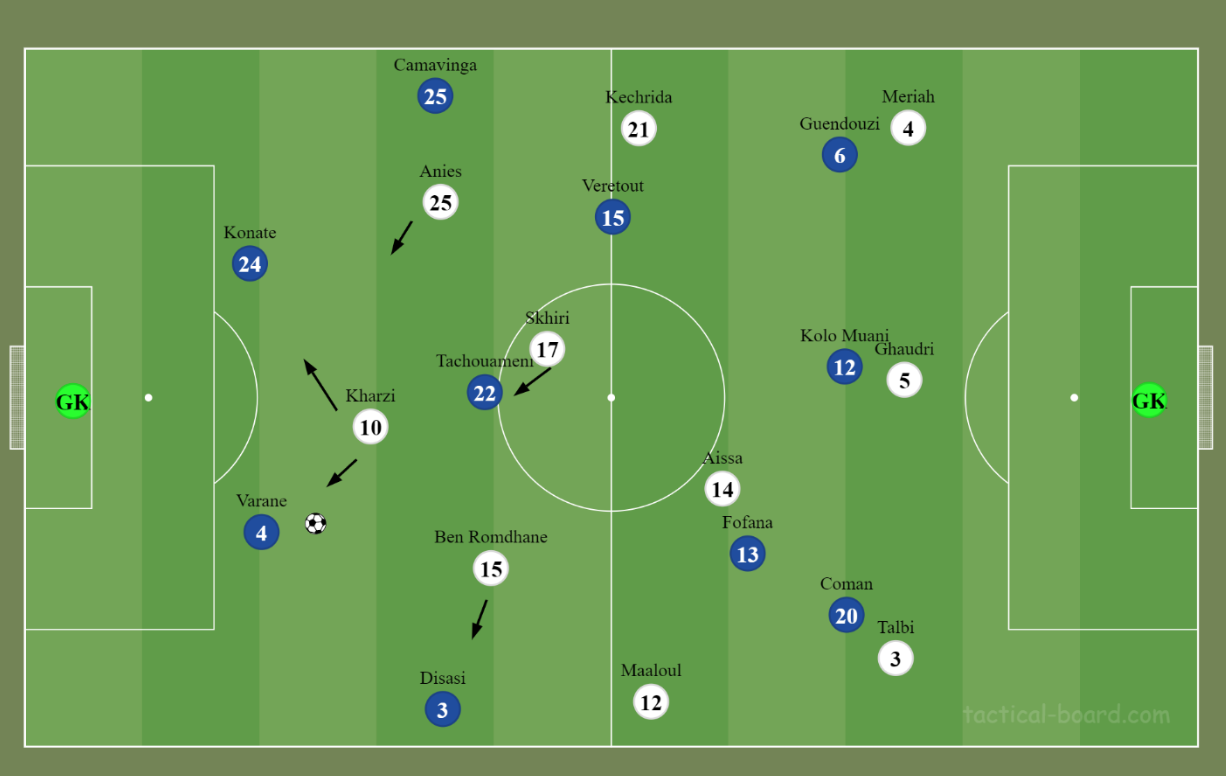
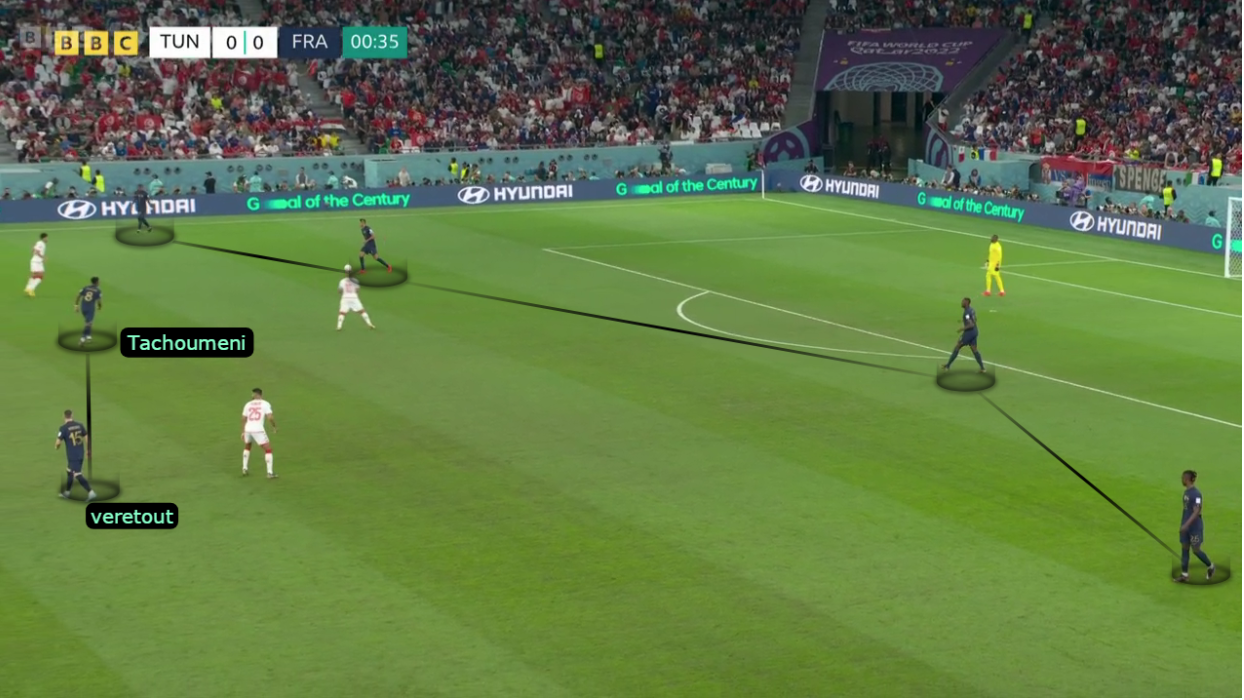
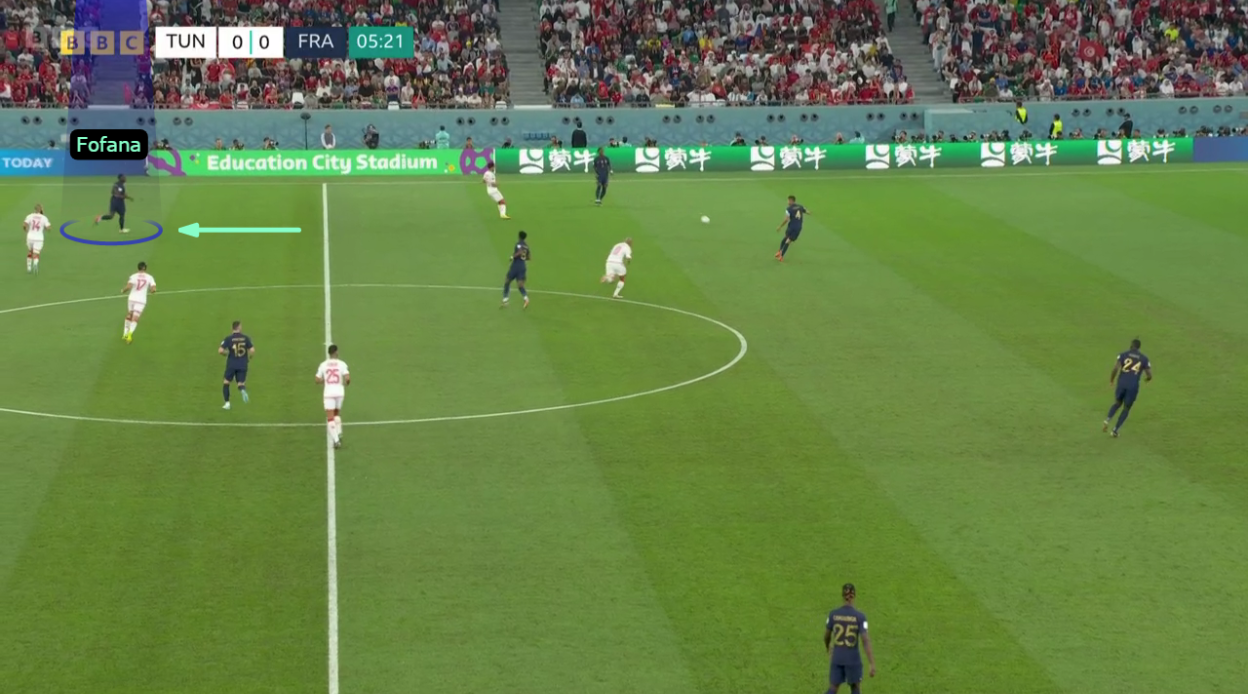
Tunisia utilized a 3-4-2-1 high-pressing shape with Khazri moving in between the France center backs whilst Ben Slimane is watching Veretout close and pressing Disasi, whilst Ben Romdhane is closely marking Edouard Camavinga and Ellyes Skhiri is positioning himself in the flanks and keeping a close eye on Tchouameni whilst Laidouni is staying back to mark Fofana, with Ben Romdhane shifting to mark Tchouameni.
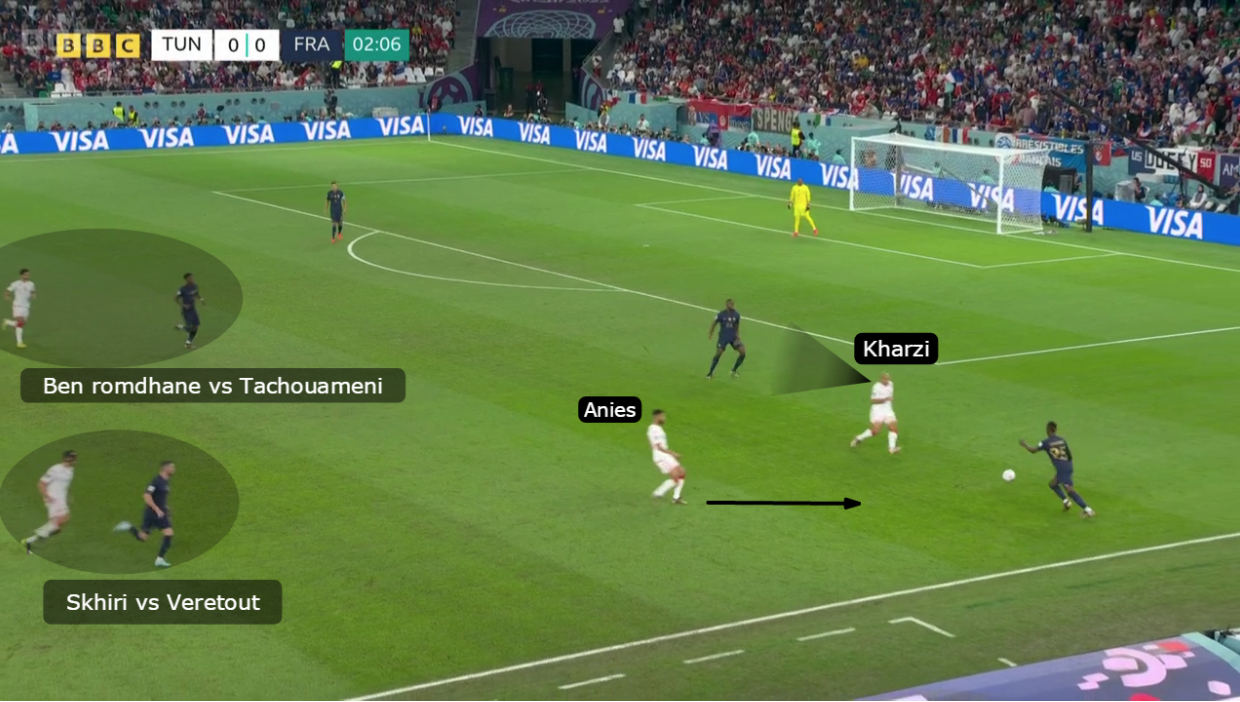
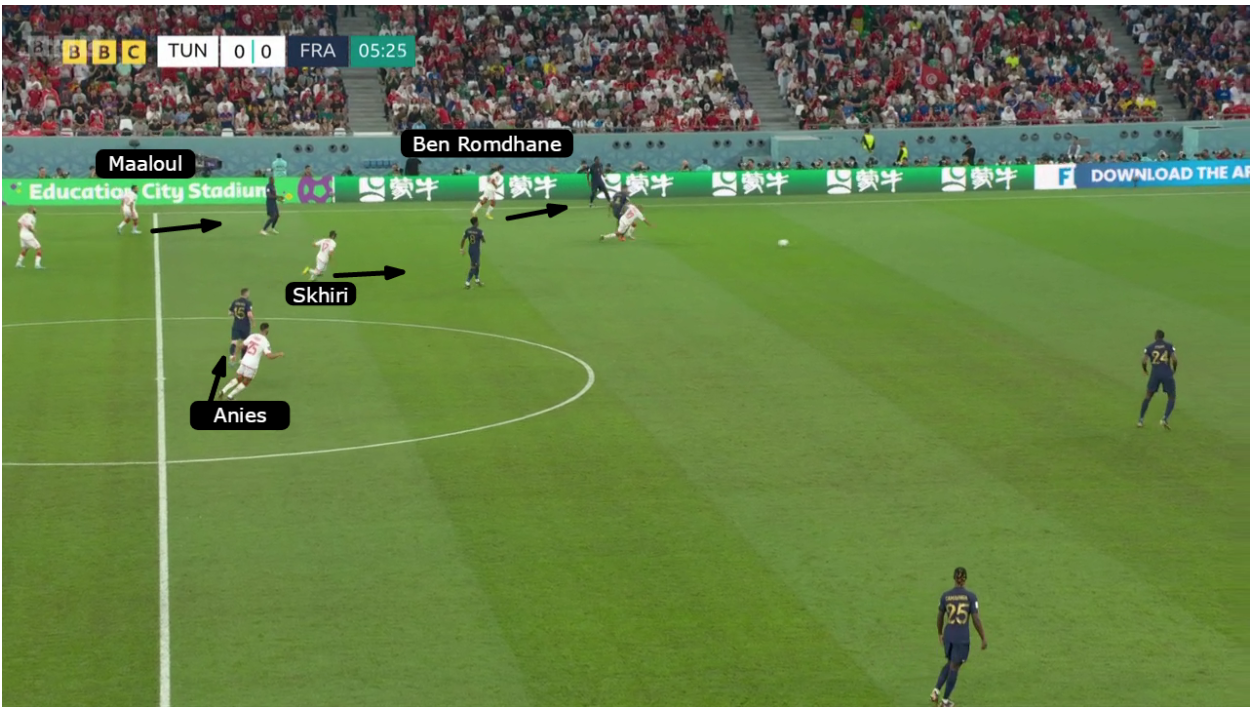
France tried to get the ball out from the right side by Camavinga but with the press of Tunisia and they failed to secure a numerical superiority and instead played long passes that were cut out by the Tunisian CBs.
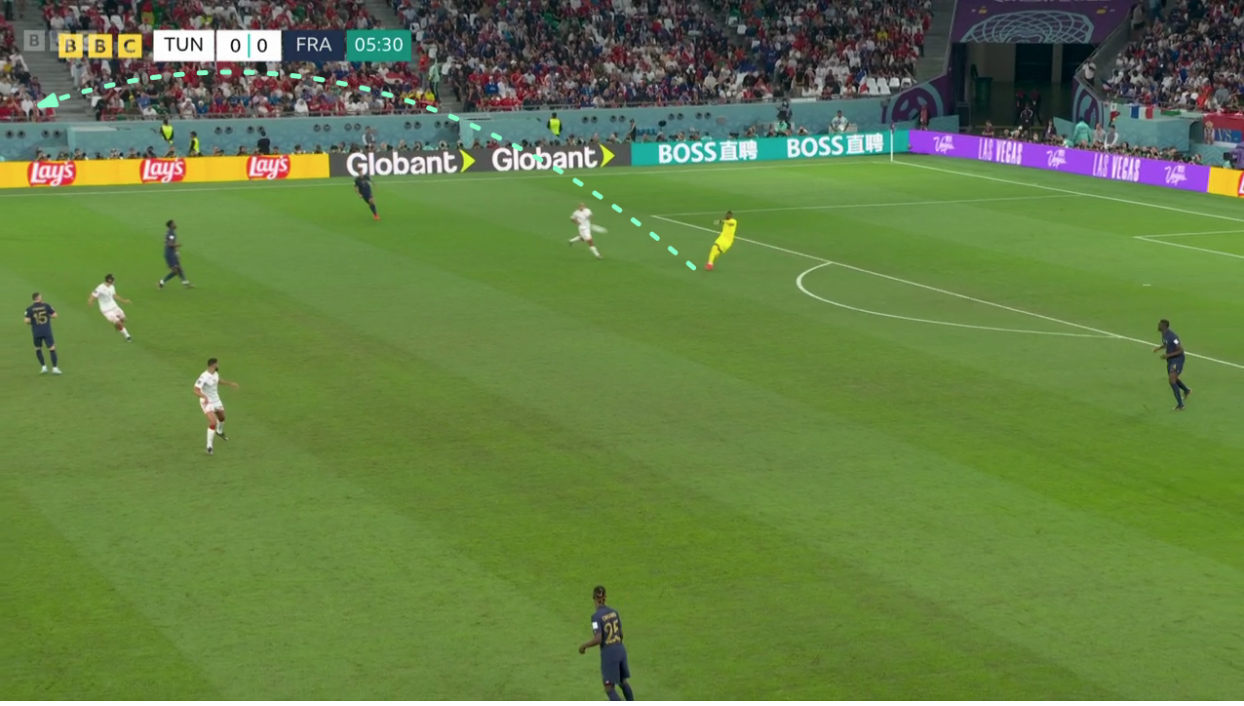
Another pattern of France through #15 Veretout by dropping to the flank area and pulling Skhiri with him at the same time Ben Romdhane did not shifting well Tchouameni would have become unmark and be a free option to pass and receive the pass in-depth, but the with the poor decision of the French players pass would sometimes make the ball cut off from the Tunisian players.
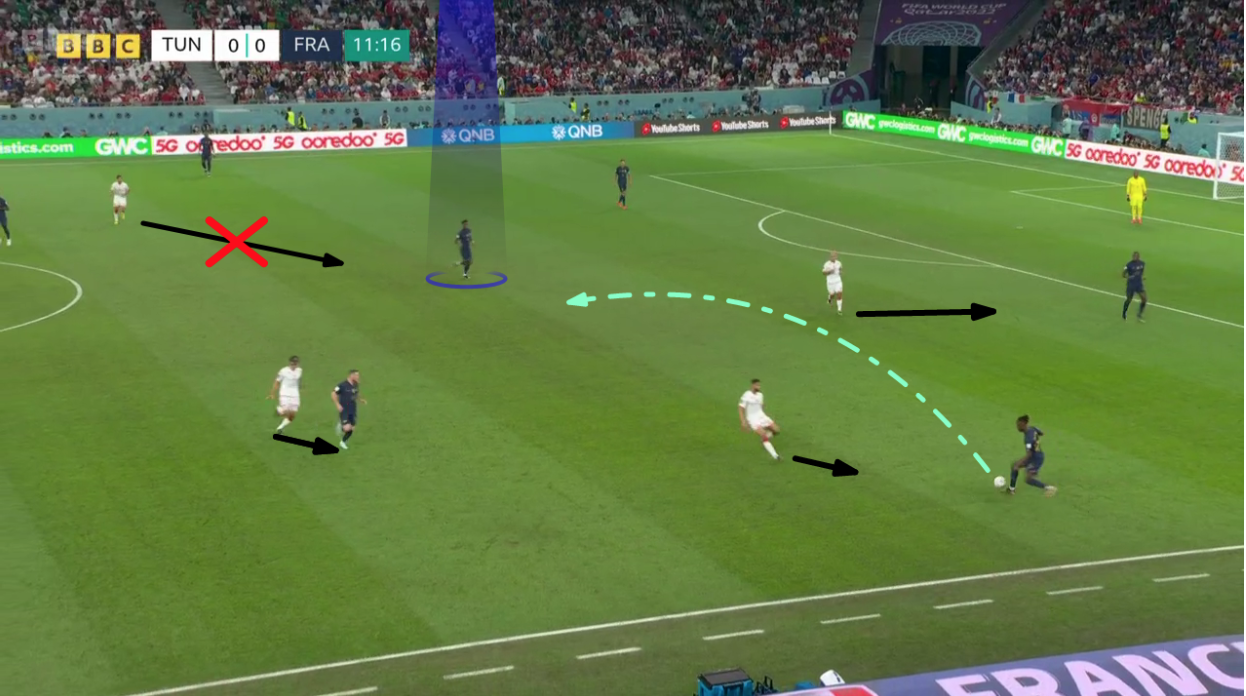
Jalel Kadri then asks the full-back to push high to press with the Skhiri man-mark for Tchouameni and Anies with Camavinga and stop the progression of the France possession.
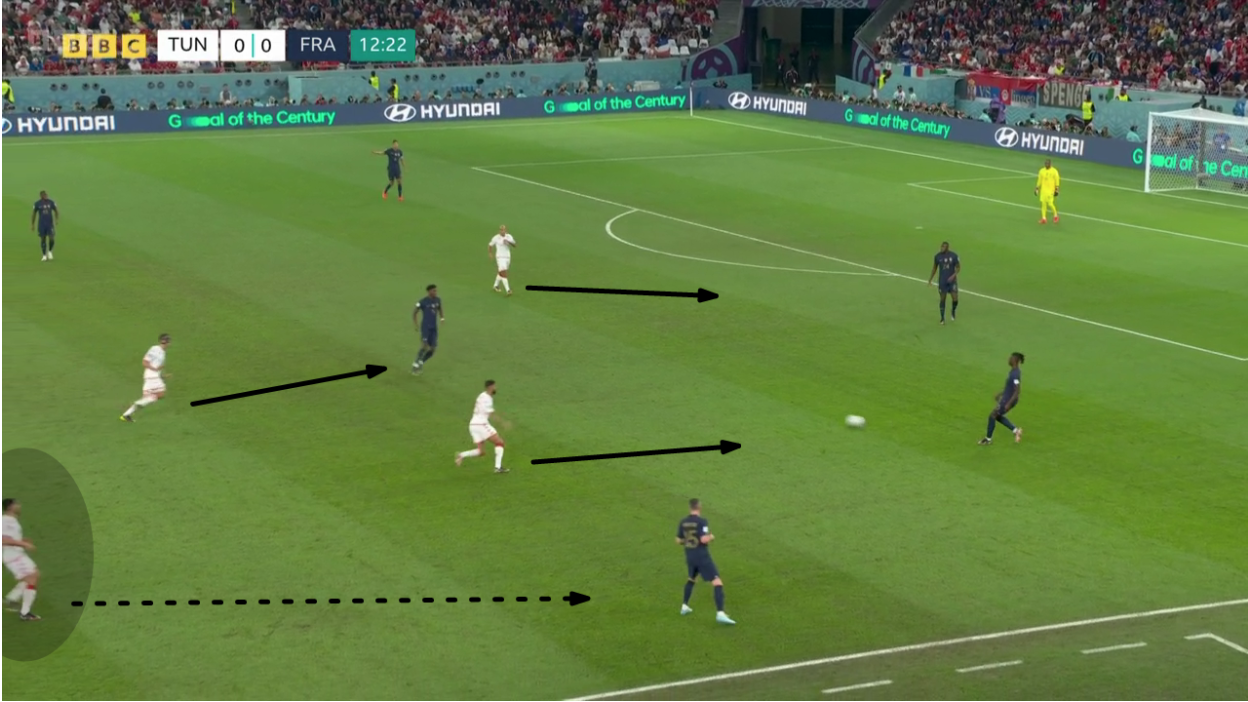
When France was trying to build the ball from the right side with the drop of Fofana to receive the pass, Aissa kept marking him, so Skhiri was returned to the depth to cover the space there that Aissa left, and full-back Maaloul push up to meet full-back Disasi and CB Talbi mark Coman with the defensive support of Skhiri and Aissa makes them out of the ball very difficult, at all France back to play the long pass.
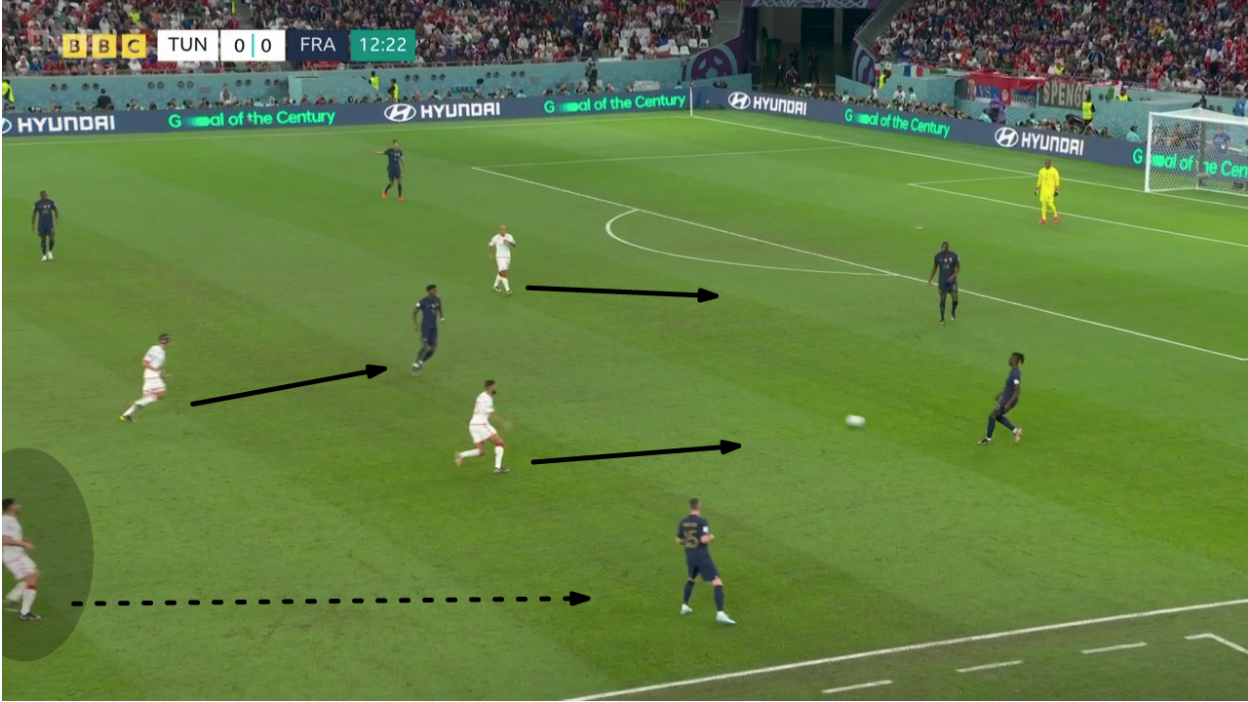
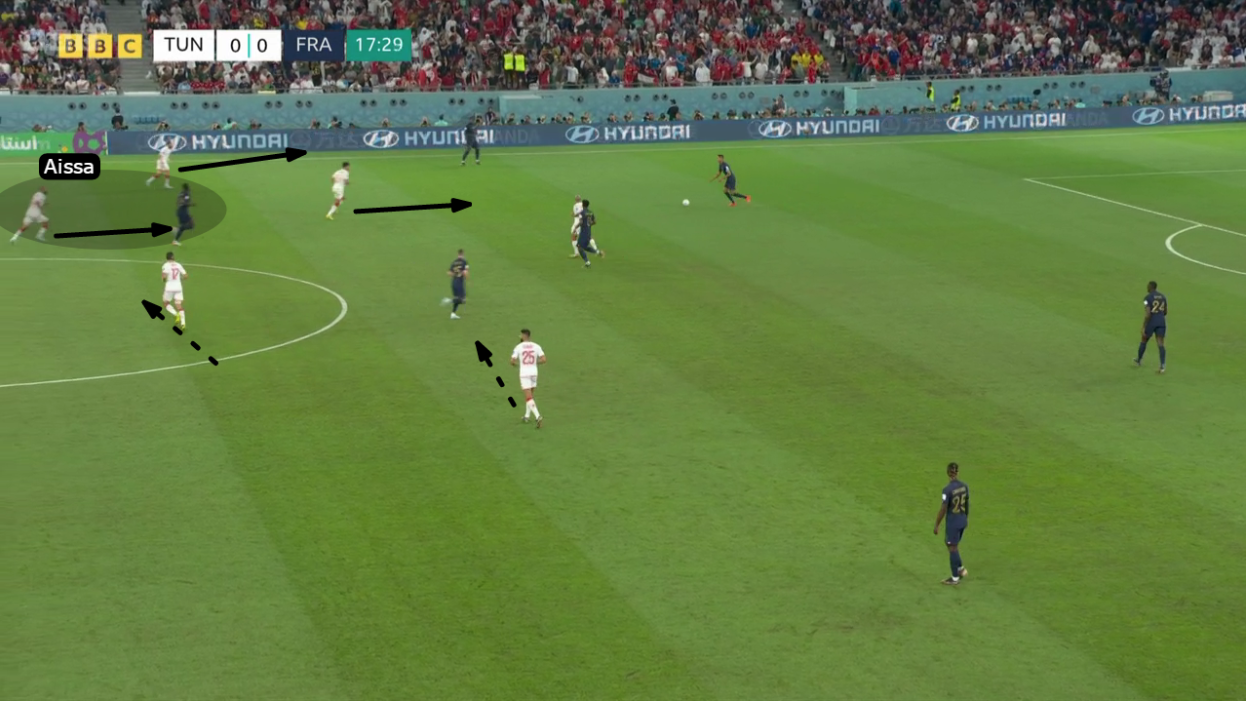
Tunisia’s Low Block
Tunisia structured themselves in a 5-4-1 with the return of the full-back next to the CBs and wingers Anies and Ben Romdhane next to the double pivot, with compact and close lines, and with the shifting from one side to the other, Tunisia was able to create numerical superiority in both flanks and take advantage of the inability of the wings of France in 1v1 situations.
Aissa and Skhiri had a great role in the shifting process and closing the passing options, when the ball is on the side of Aissa he drop to the flank and Skhiri closes the depth and in the same position on the other side and shift roles, while FB stays on the line with France winger, Talbi and Meriah were devoted to closing half the space.
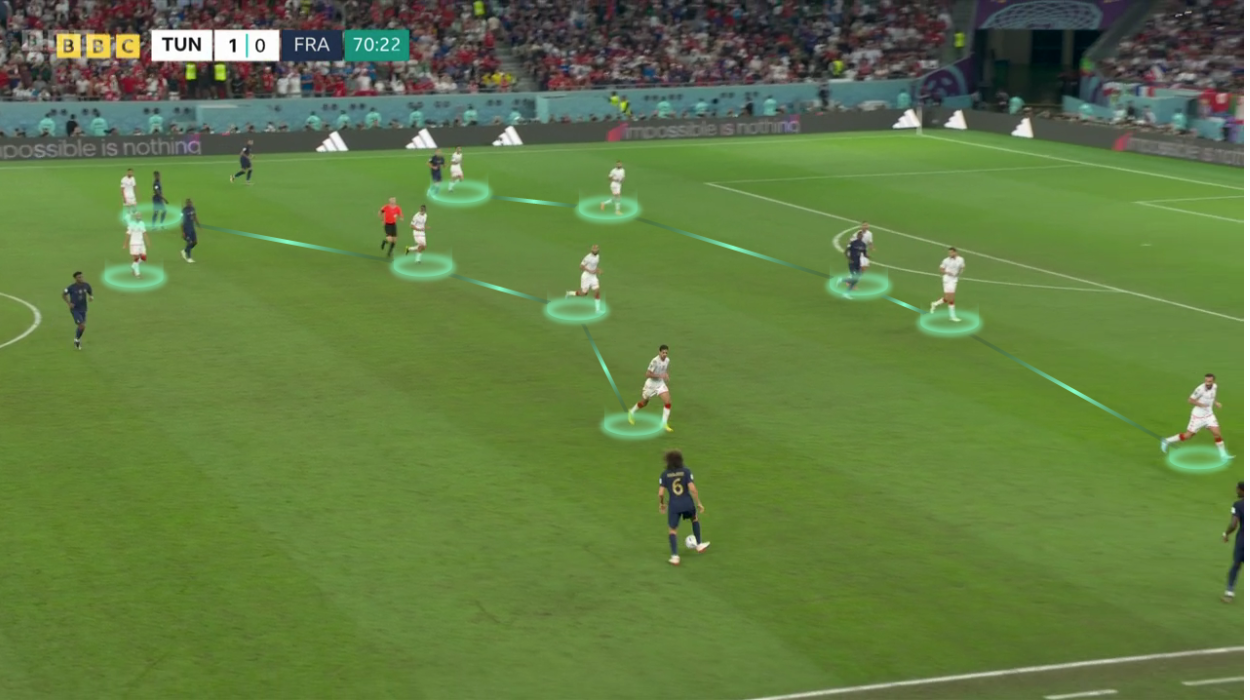
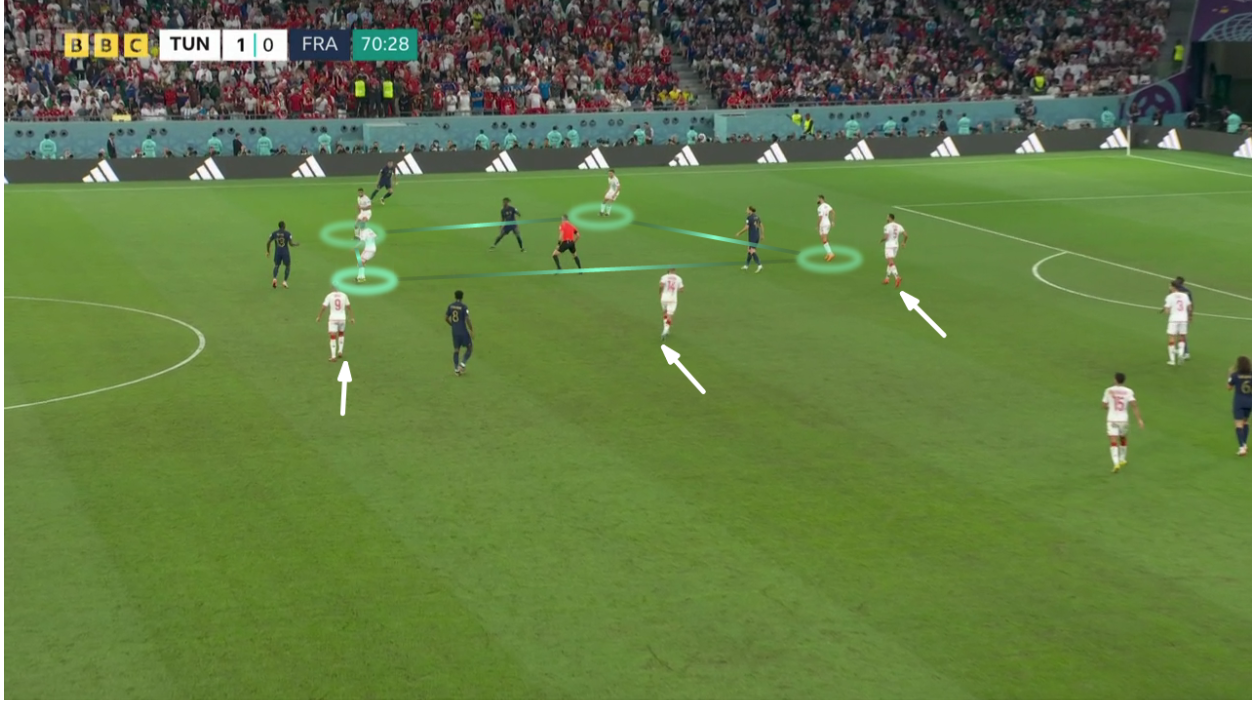
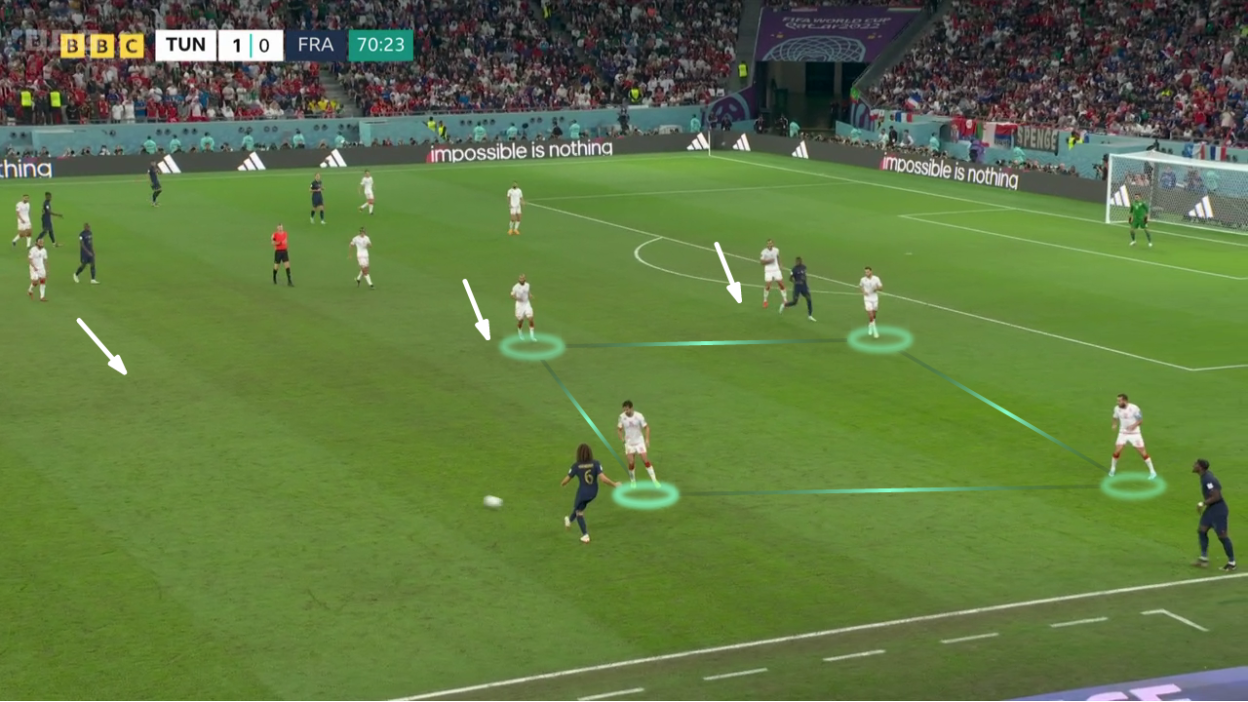
With the entrance of Kylian Mbappe for Coman, Ben Romdhane had a big role in pressing and covering the space around him, so that the full-back could mark the France full-back positioning high and one of the CBs could close half space, every time there were two lines of defense in front of Mbappe or the ball carrier, which reduced the spaces and made dribbling 1vs1 impossible therefore Mbappe created only one dangerous chance.
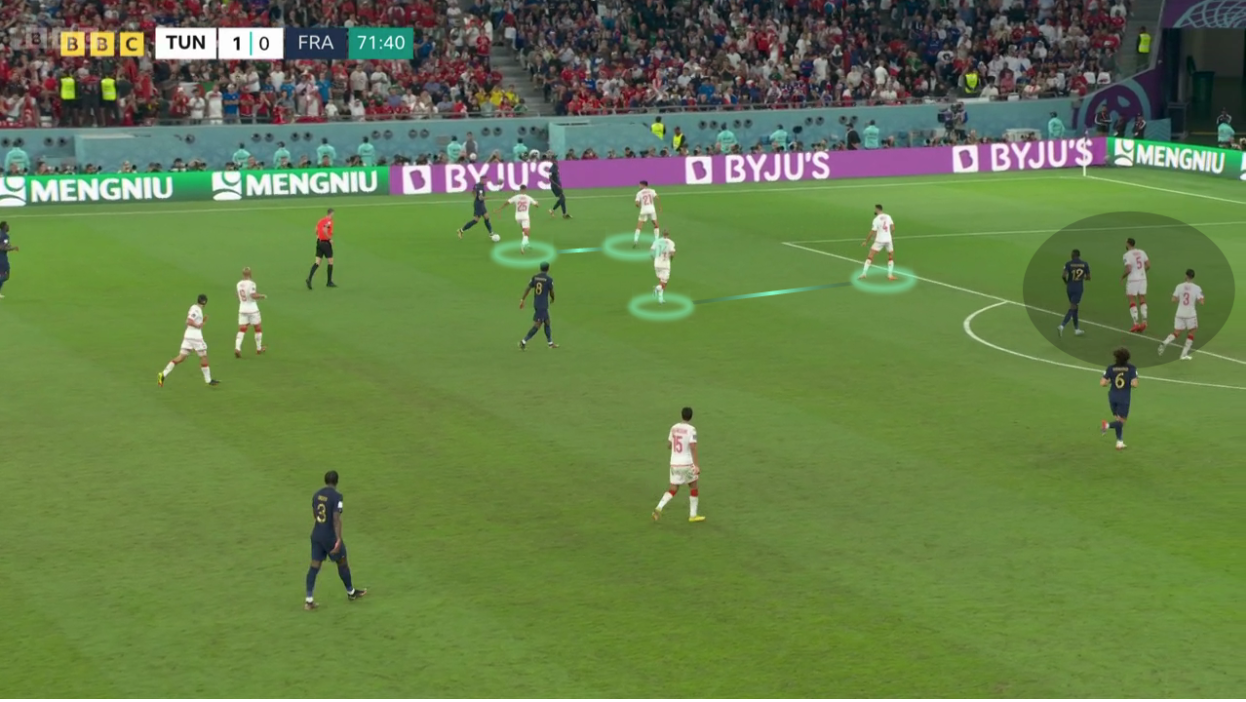
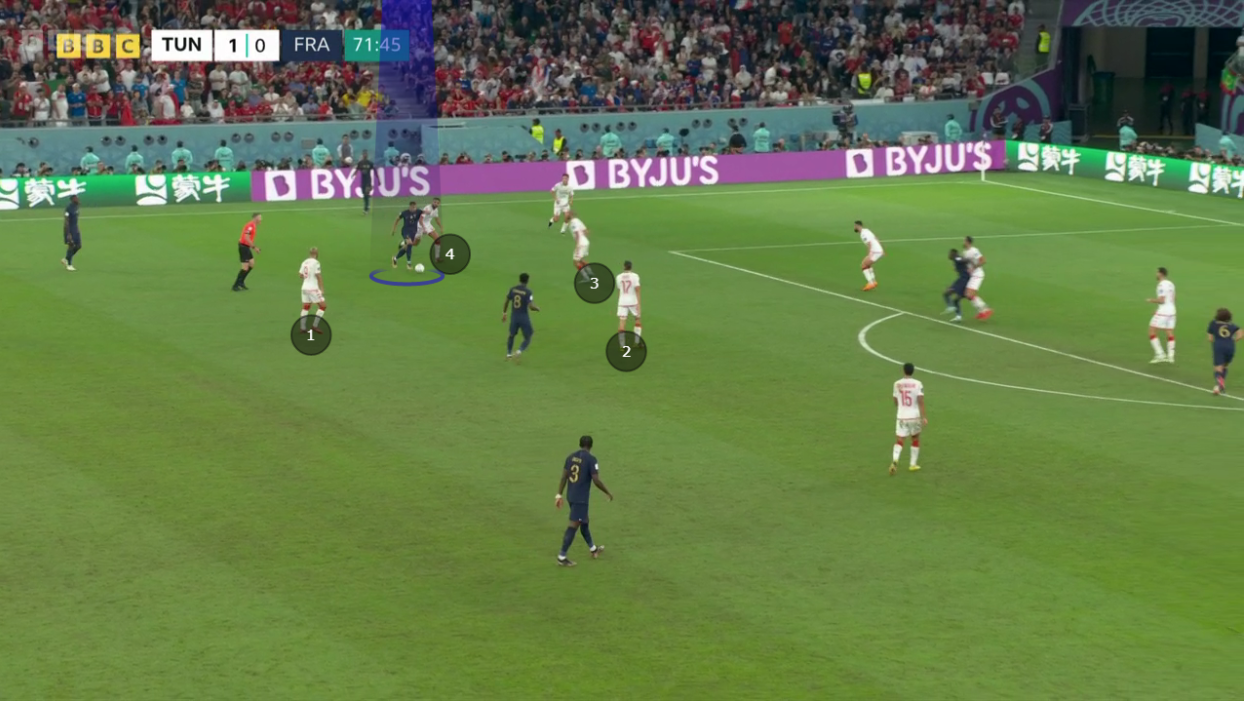
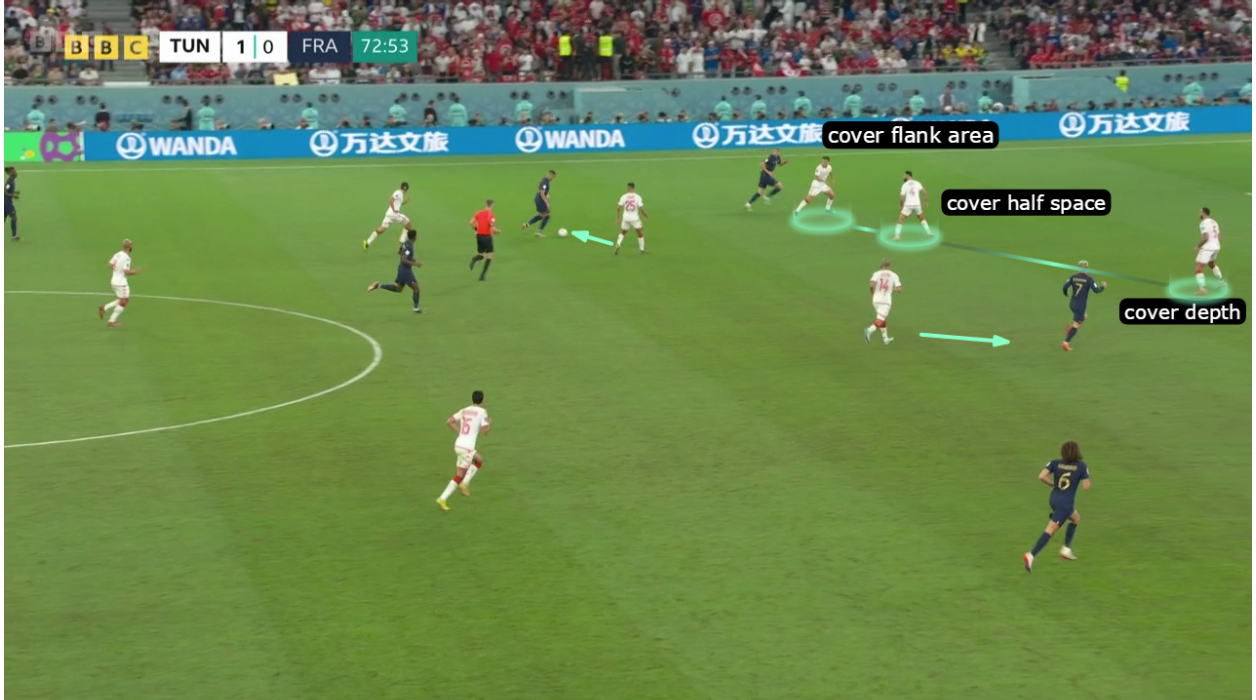
Almost the same thing in the other side when he receives the ball Maaloul go and pressed him aggressively even if he received the pass high, to try to prevent him from turning and facing the goal and running in the space to prevent the 1v1 situation, always Ben Romdhane in support of Maaloul to make the situation 2v1 and did not create any danger.
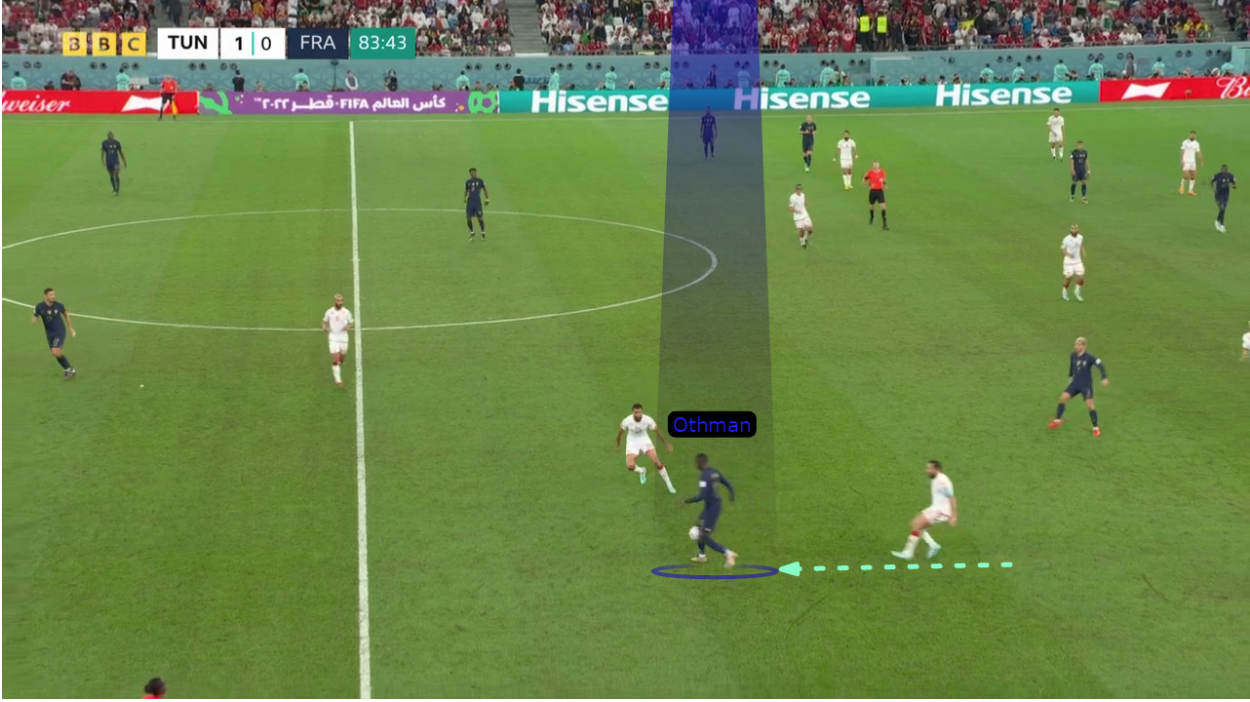
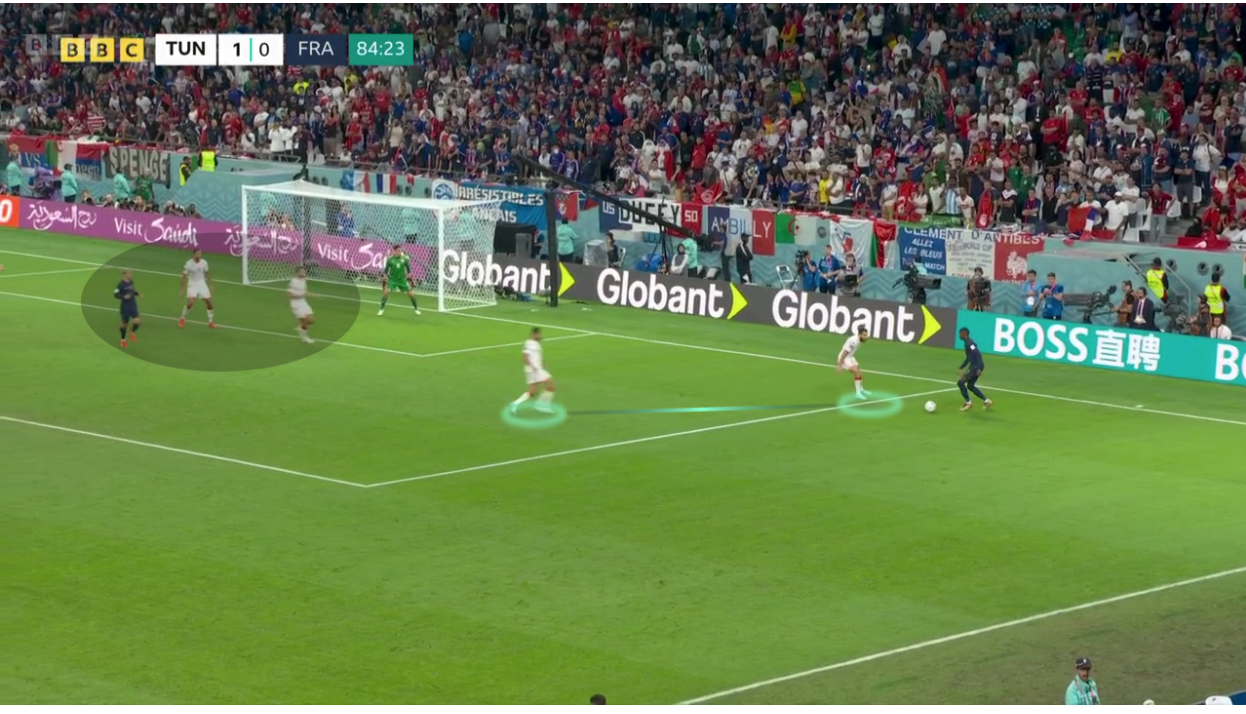
Tunisia’s Ball Progression
Tunisia tried to progress the ball with a 3-4-3 shape with three CBs in the back, while the FB Maaloul and Keshrida moved forward up next to Aissa and Skhiri, Tunisia depended on attacking the left side of France to exploit Camavinga in the unnatural position of left back.
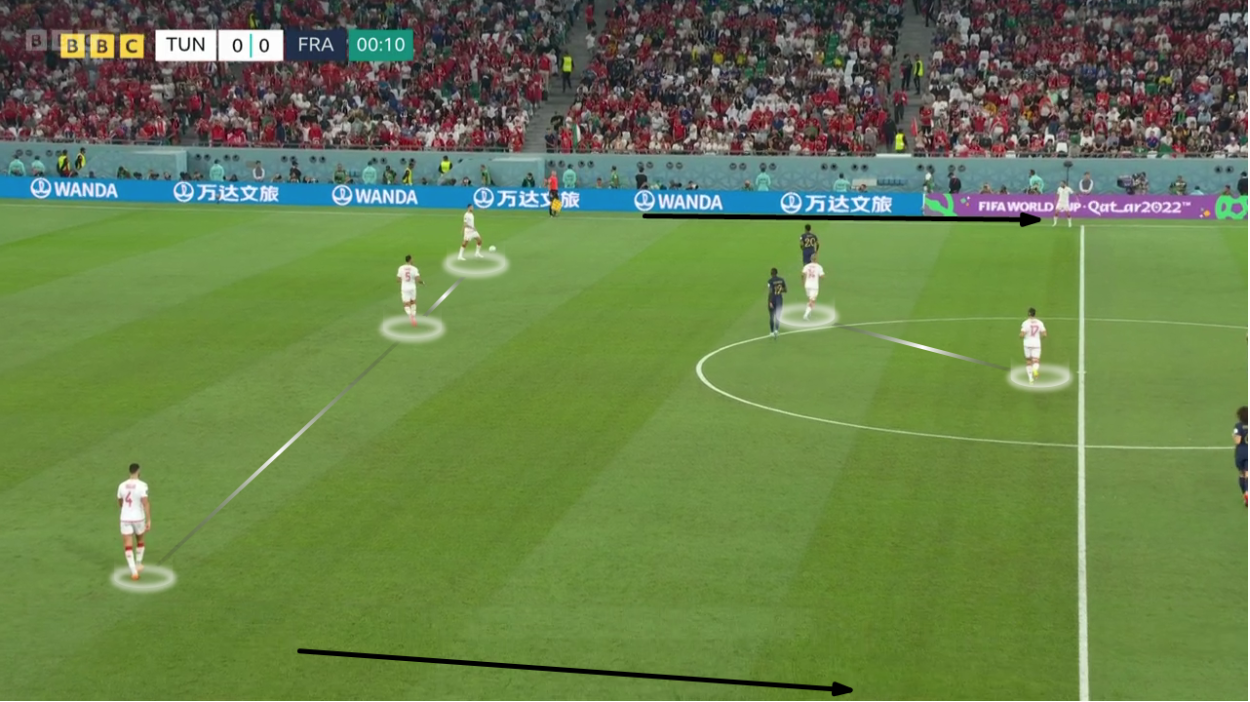
France was defending in the mid-block 4-4-2 flat formation with Coman #20 and #12 Kolo Muani in the first line of press and the return of Guendouzi to defensive support in Camavinga’s side.
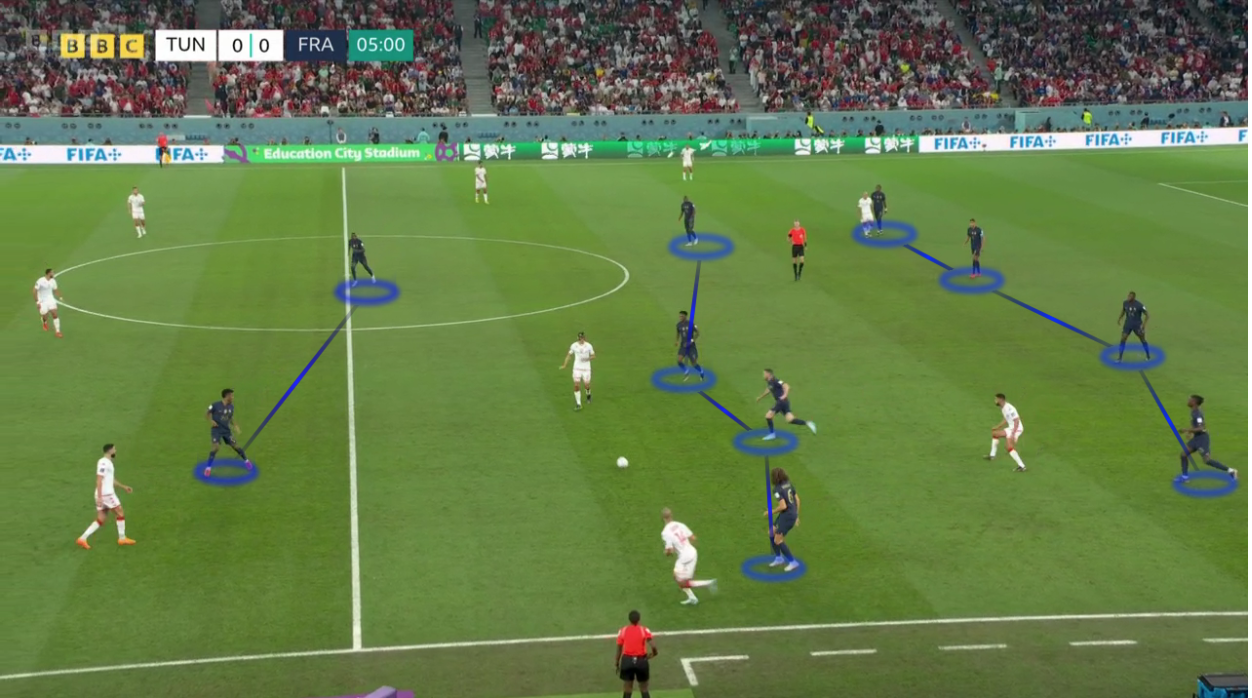
Tunisia tried to create a numerical superiority on the side of Camavinga with Anis, Keshrida, Kharzi, and sometimes Skhiri and link-up there and playing balls in the space back of the French full-back, but with the support of Guedouzi and Veretout defensive and his marking of Skhiri, Fofana marking Aissa makes that a little difficult with the lack of free spaces left by the French players.
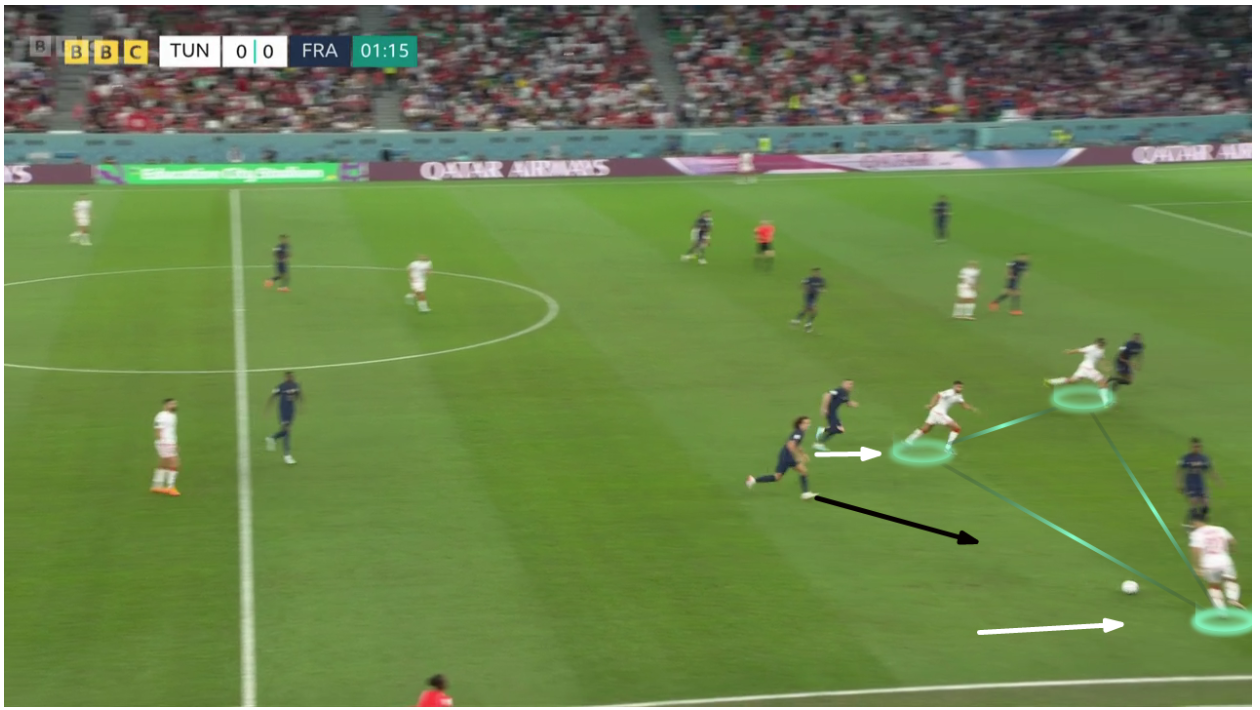
Aissa tries to drop to the flank area to receive a pass between the line and create numerical superiority, Skhiri stays alone in depth when the ball’s on the other side, and Skhiri and Aissa switch roles.
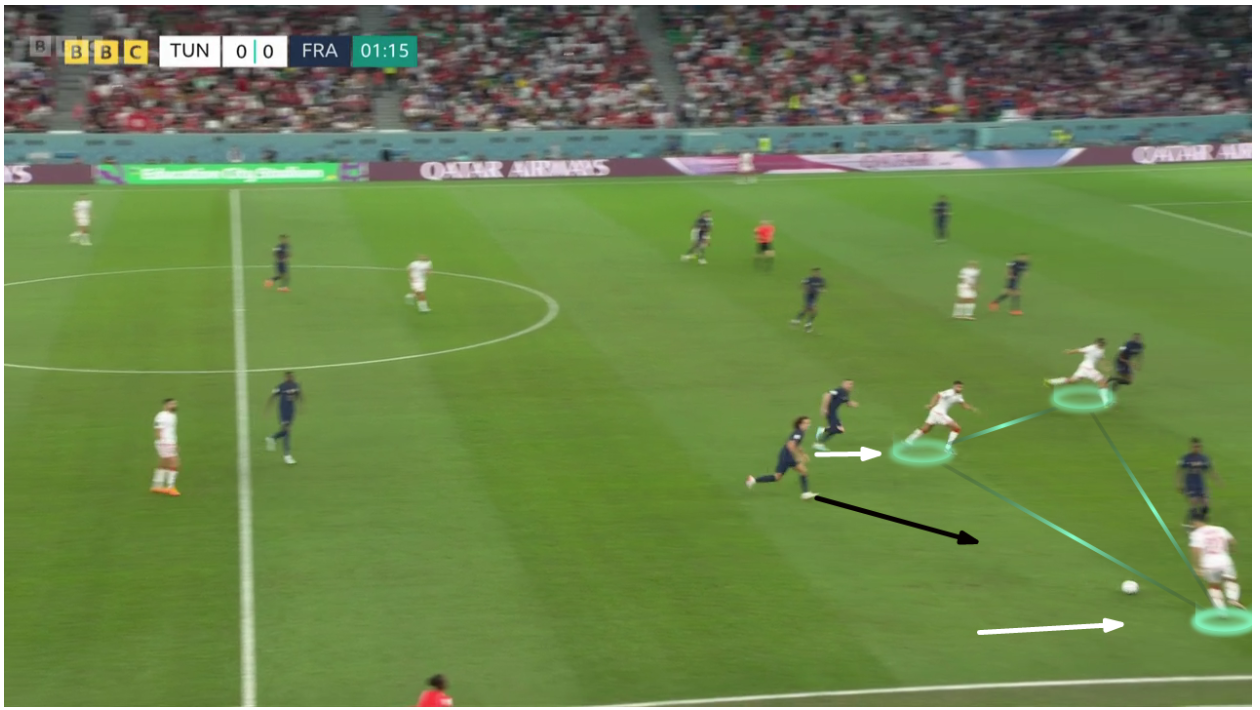
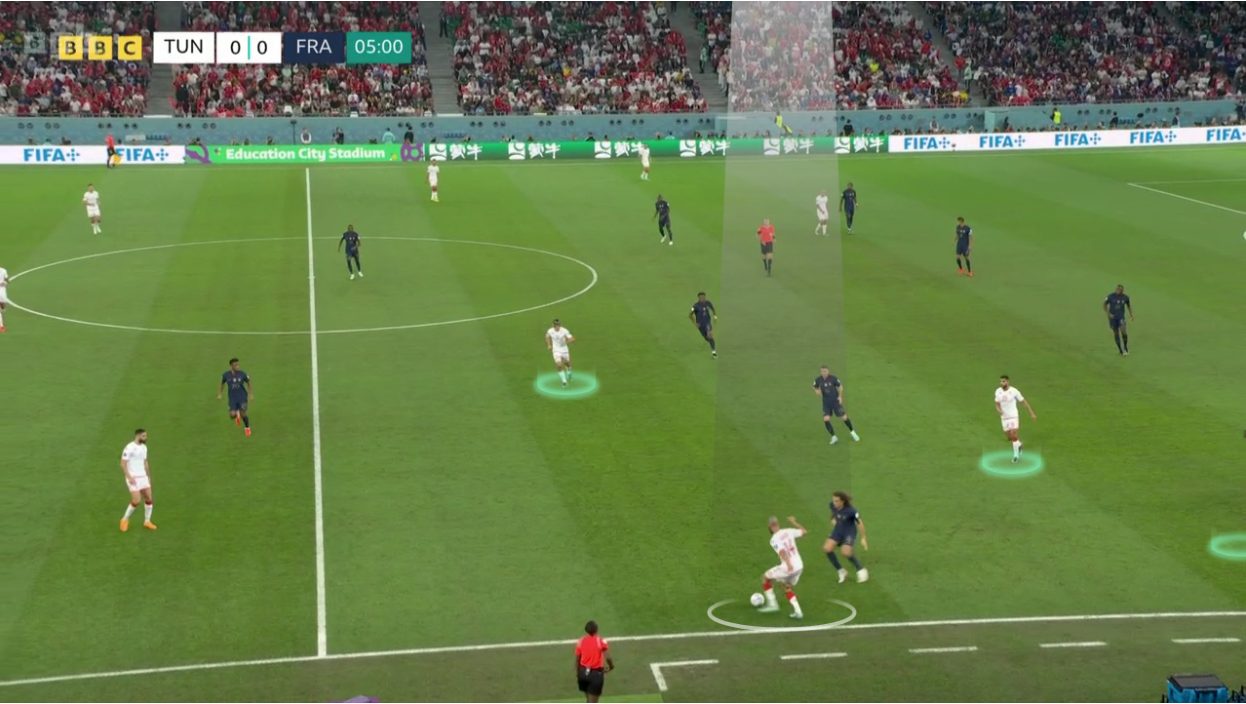
The numerical superiority in Tunisia’s wide area caused a problem in France’s defense line to cover half-space but was not well exploited by Tunisia.
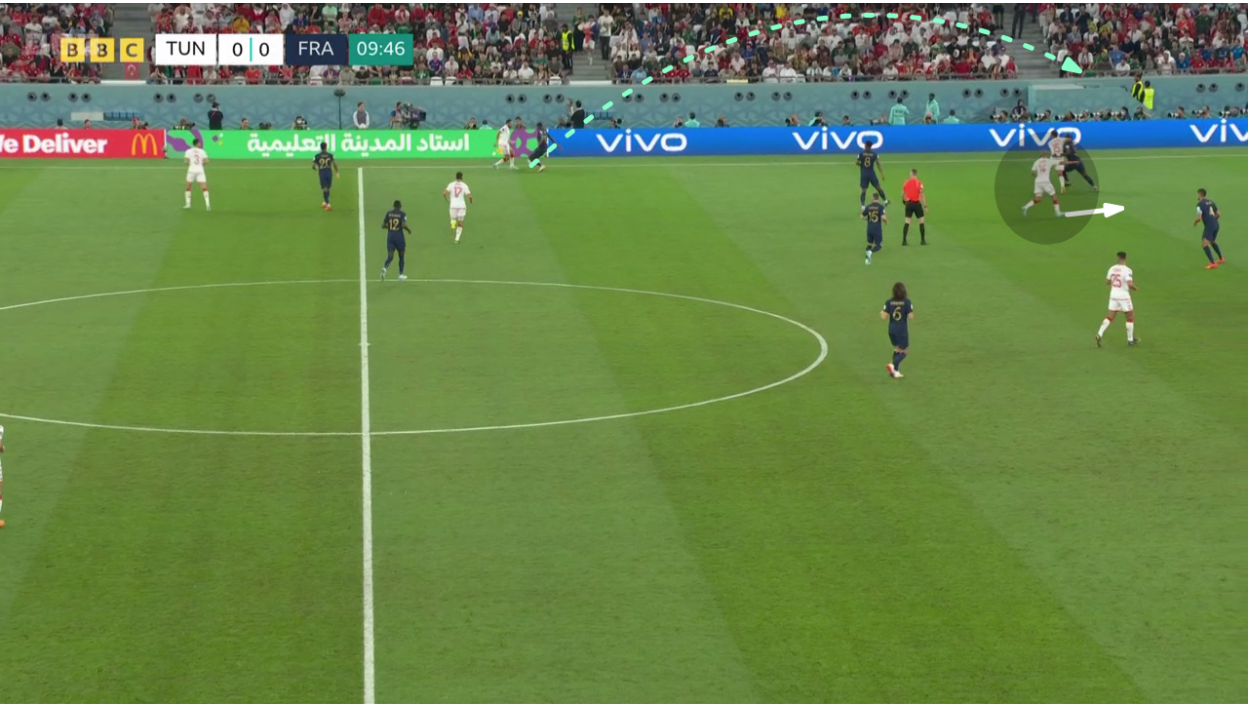
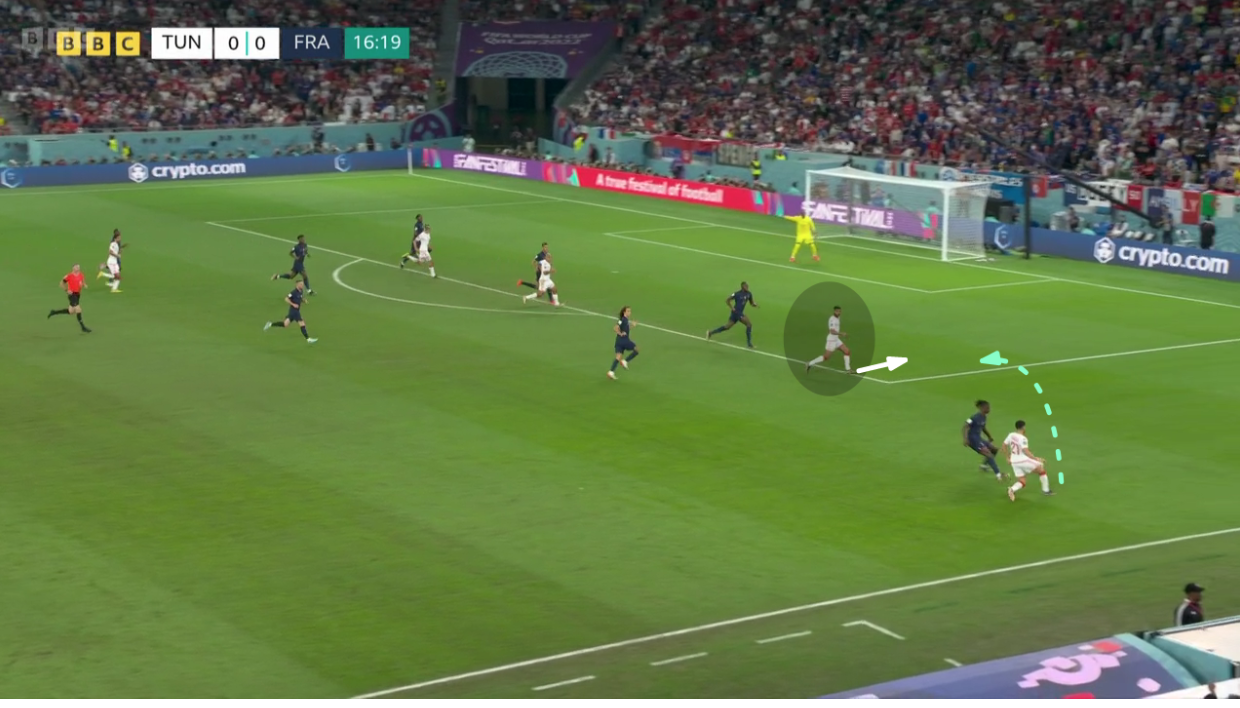
Skhiri and Aissa in the positioning themselves in the half space to receive the pass which helped Tunisia to reach the final third without seriously threatening the goal, whilst their 4-4-2 compact shape with closed space between the lines helped France to keep the ball away from the opposing goal.
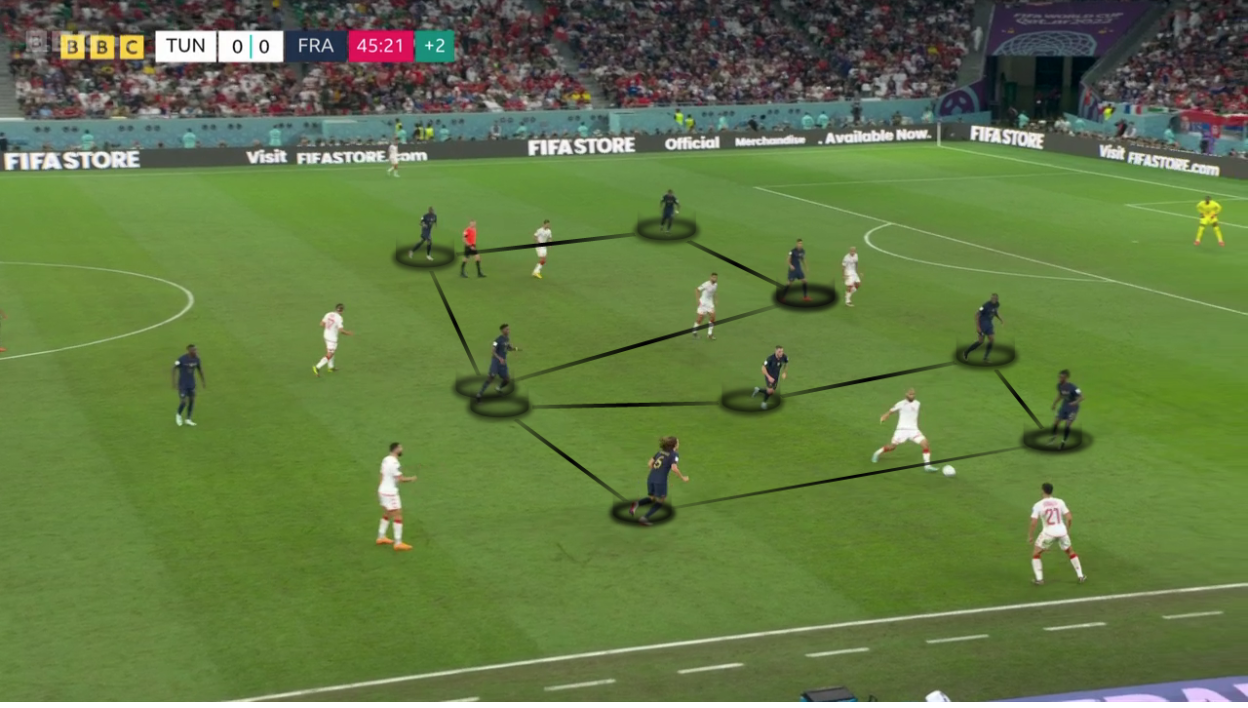
Attacking Transitions
The offensive transition is the most effective phase of Tunisia by exploiting the move up of France FBs (Disasi and Camavinga) and playing in the space behind it, Tunisia diversified its transition from both sides and through depth, but the most dangerous was from the left side Ben Romdhane against Disasi.
After a good gg press, especially from Aissa or Skhiri, and the cut of the ball clearly, the transition begins quickly by passing the ball in the Ben Romdhane and exploiting his ability in 1 against 1 or running in the space behind the back, most of the transition of this side were through Skhiri, and on the other hand when Aissa received either passing to Khazri and linking with the wings or passing to the winger Anies directly, but he was not good enough in 1v1.
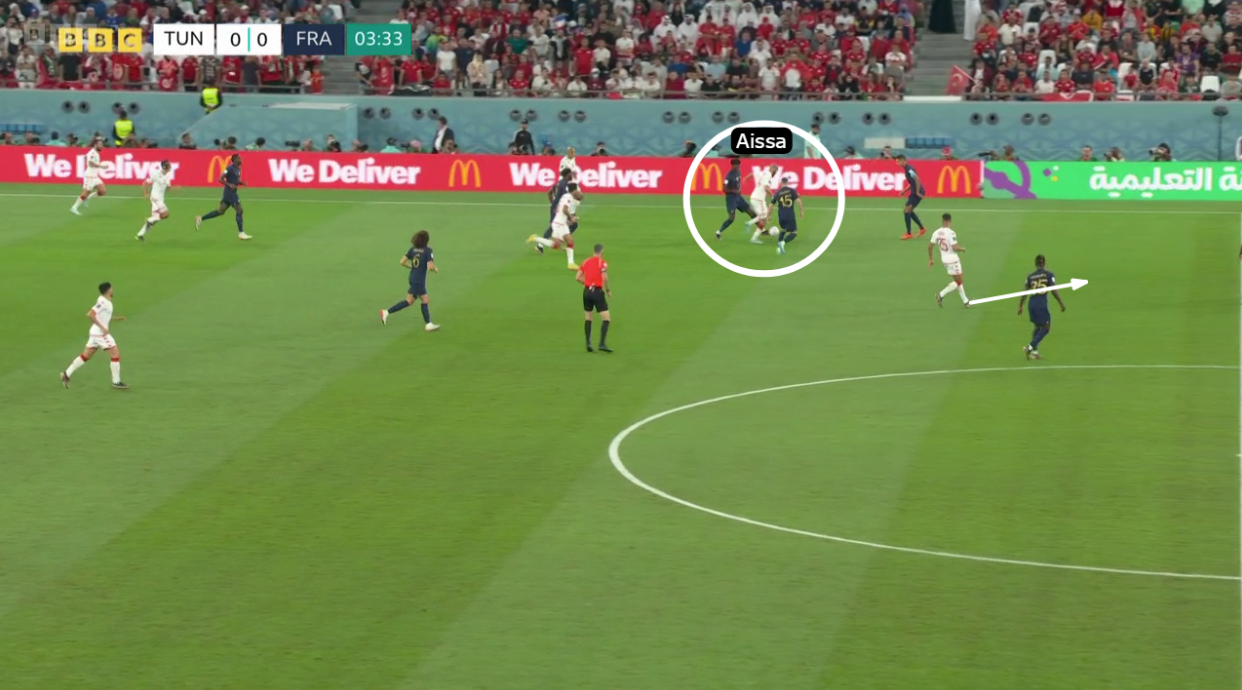
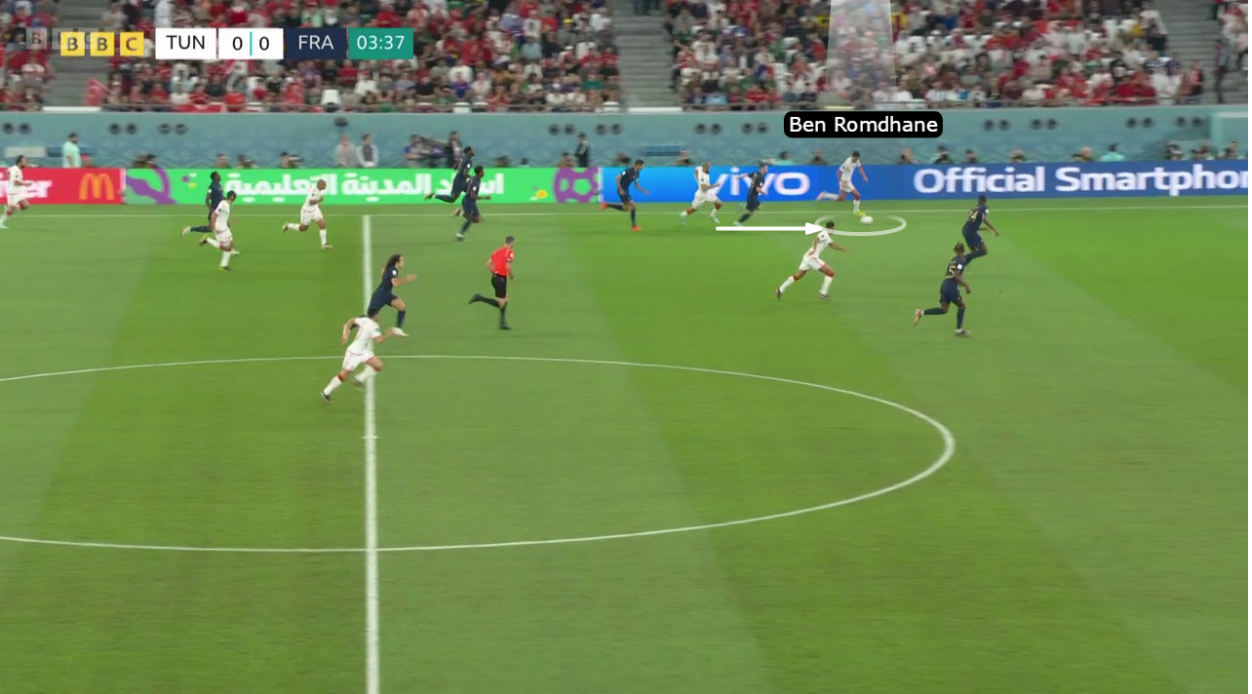
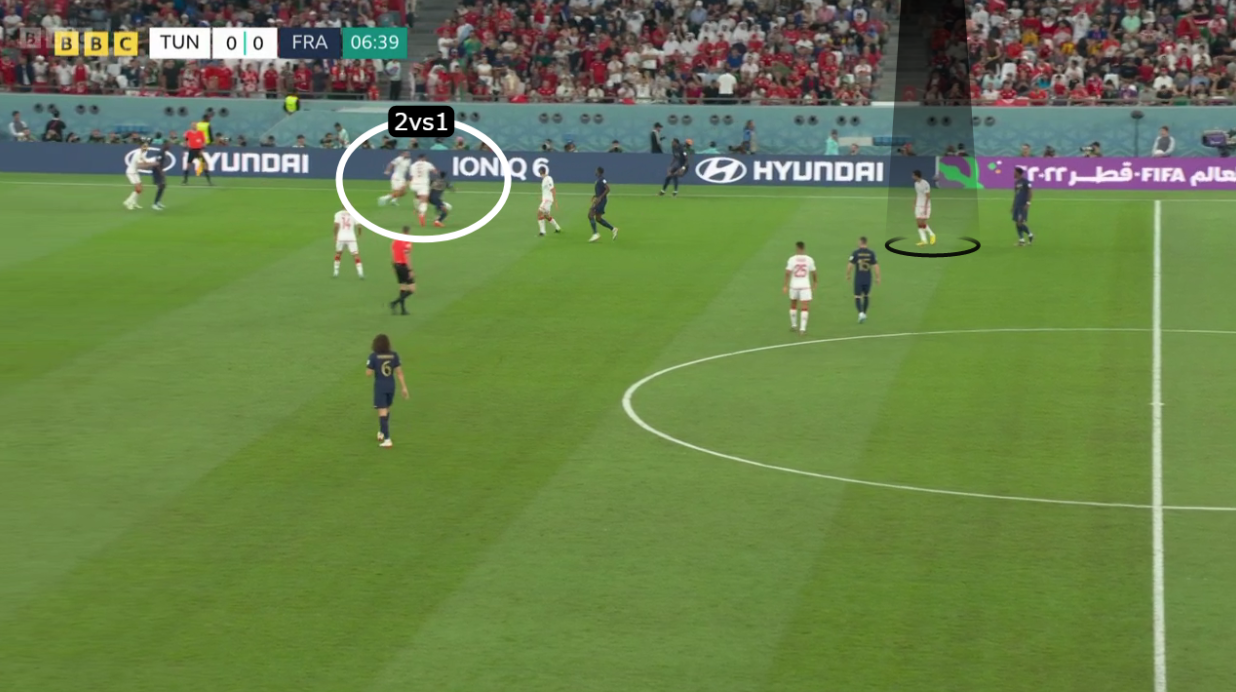
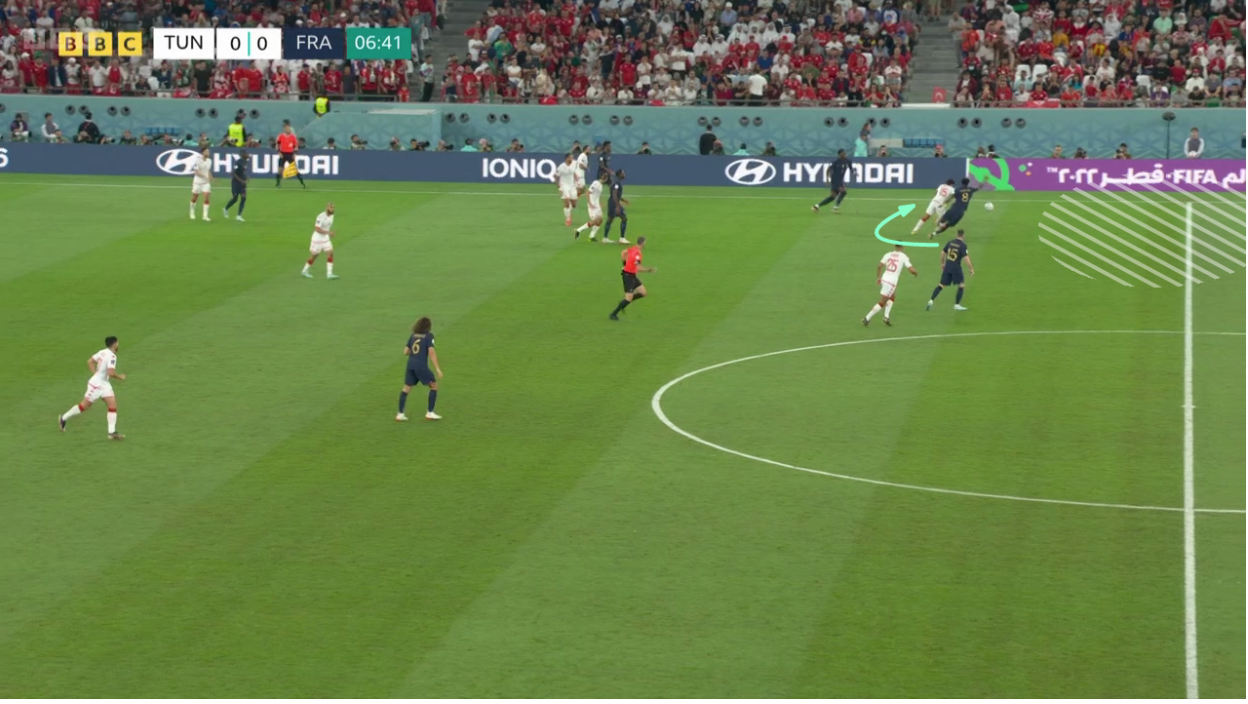
As can be seen in the below heat map, Tunisia spent the majority of their time in possession playing in the wide areas.
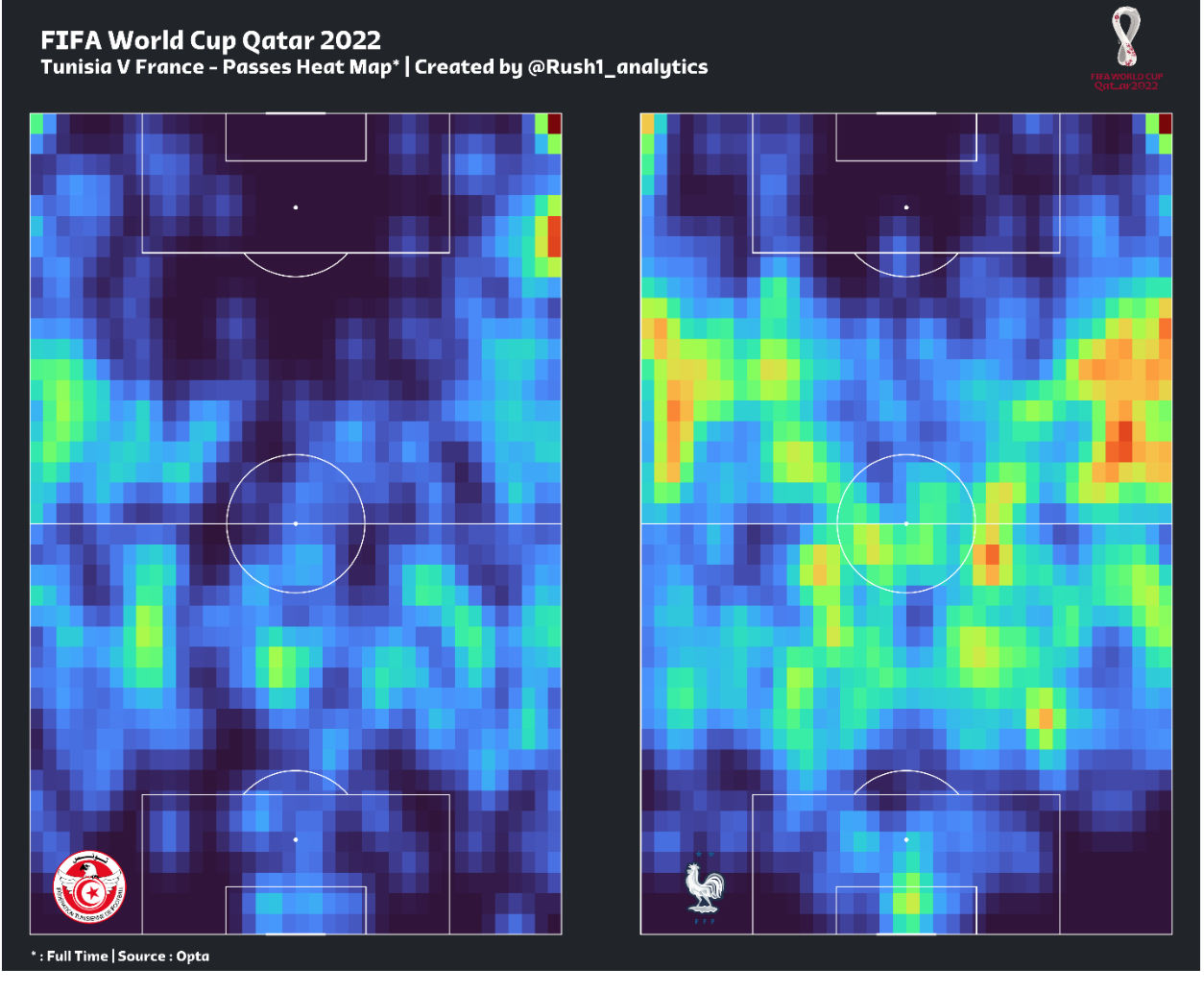
Photo: @Rush1_analytics
Tunisia’s goal came after a good 2v1 pressing situation with Skhiri linking up with Laidouni and Khazri doing well to carry the ball forward and find a way past Steve Mandanda to break the deadlock for the Eagles of Carthage.
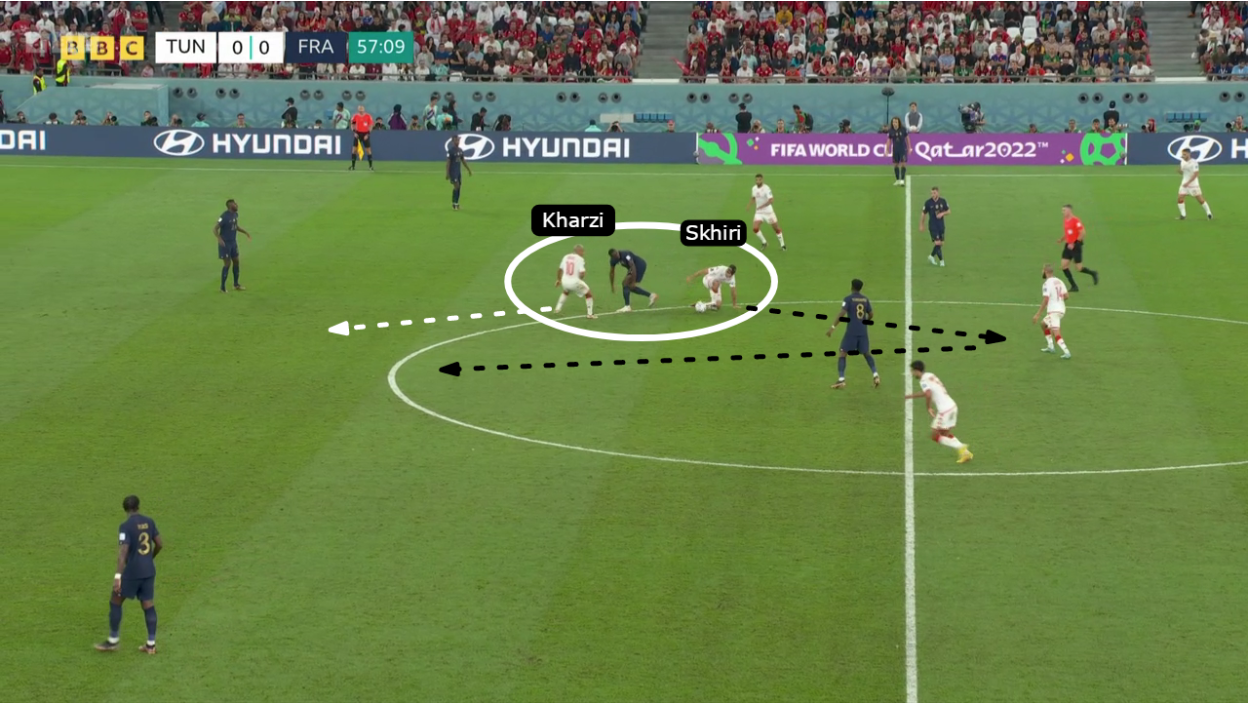
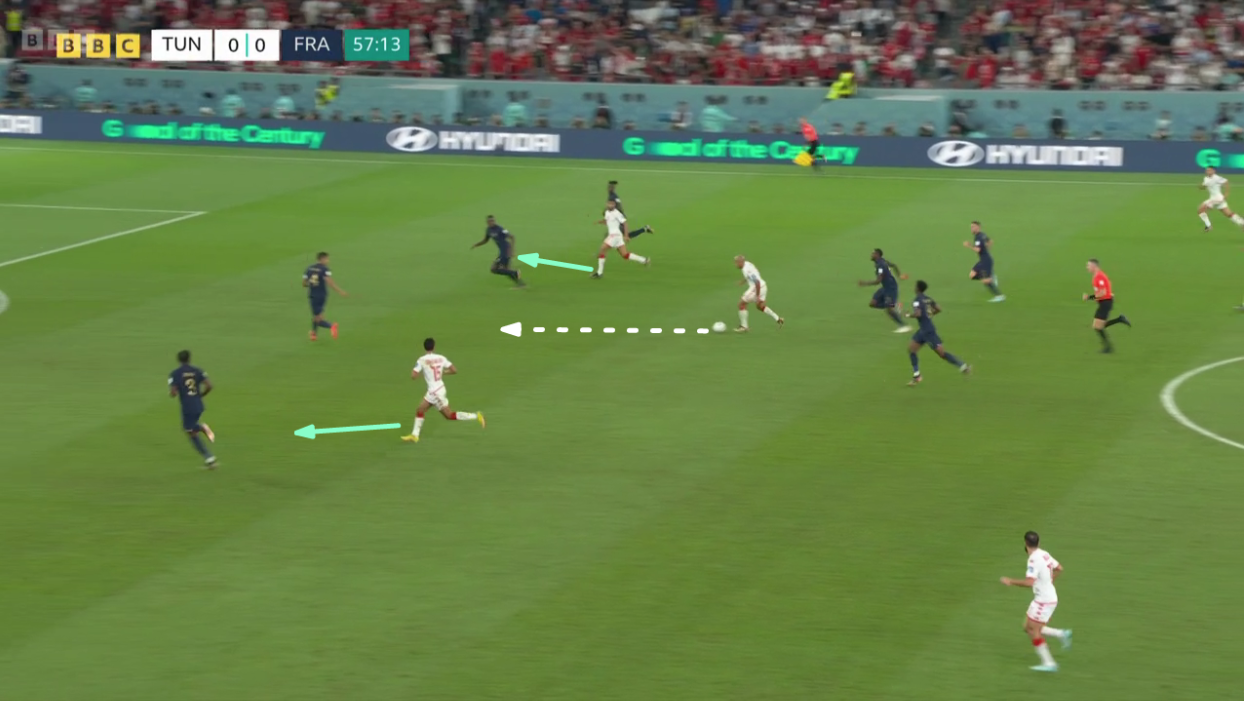
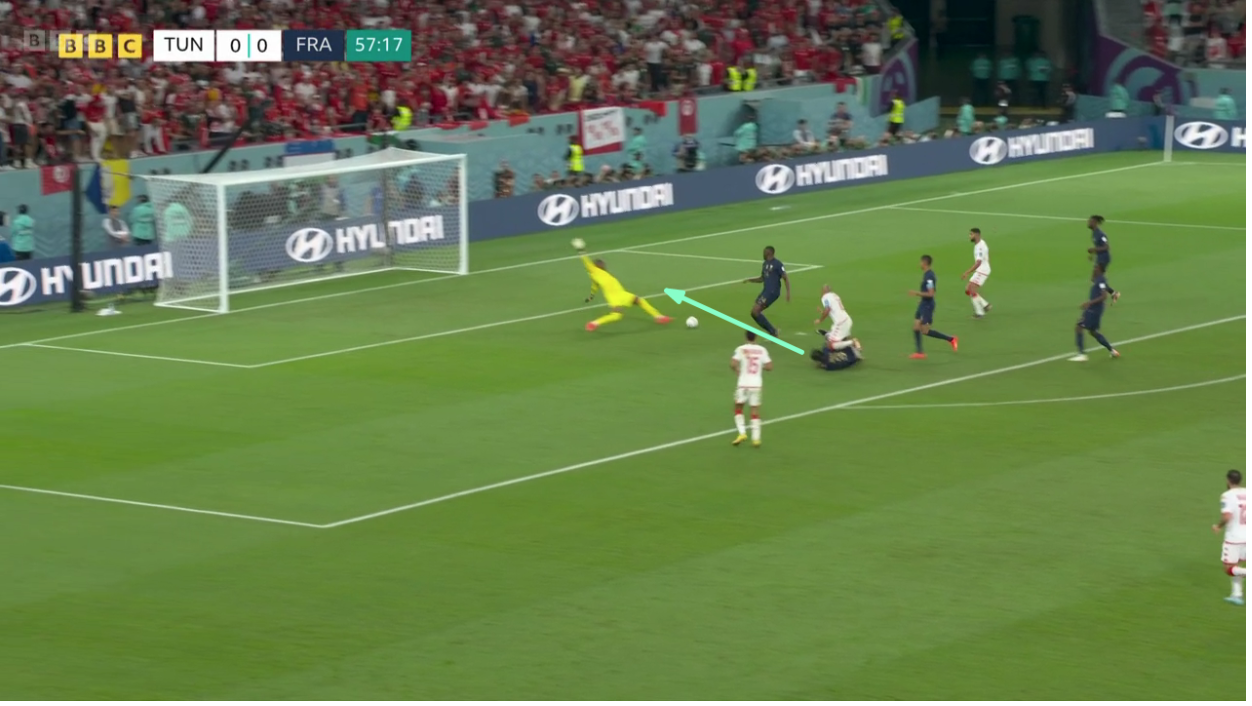
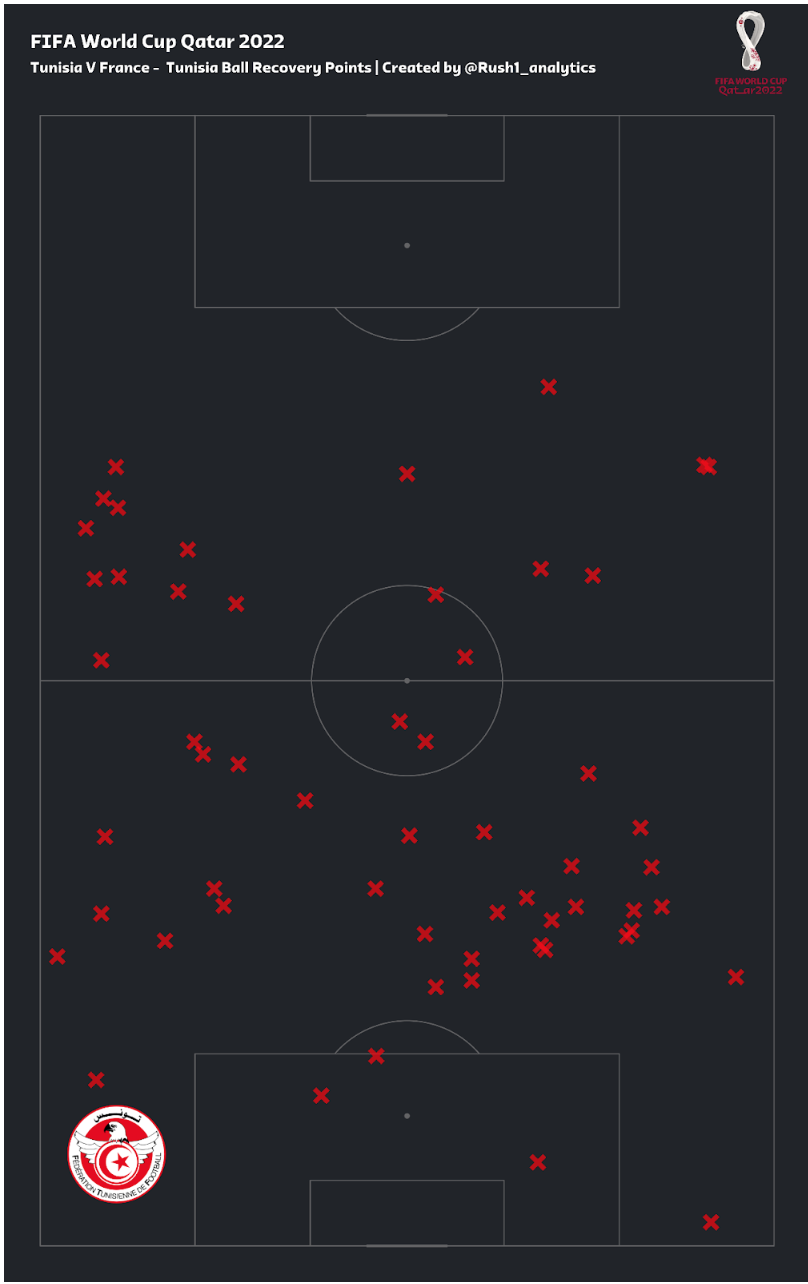
Photo: @Rush1_Analytics
Conclusion
Whilst it wasn’t enough to secure their first-ever knockout round berth, Tunisia punched above their weight and conceded just one goal across three matches against Denmark, Australia and France, a feat only matched by the Netherlands, USA, Croatia, Brazil, and fellow North African side Morocco. They have beaten a European side for the first time ever in a World Cup and given France their first group stage defeat since 2010. Les Bleus will be looking to bounce back with a victory as they take on Poland in the Round of 16, with Didier Deschamps’ side attempting to become the first team since Brazil (1958-1962) to win back-to-back tournaments.
By: Mohammad Bani Atta / @TacticalZone14
Data by: Yahia Rashwan / @Rush1_analytics
Featured Image: @GabFoligno / Sarah Stier – FIFA
